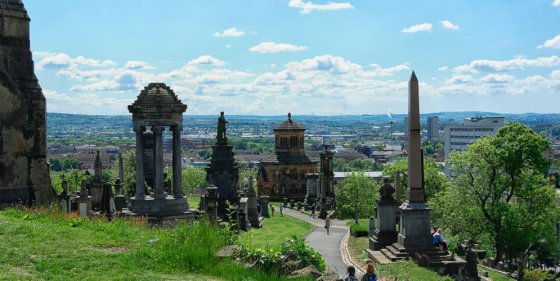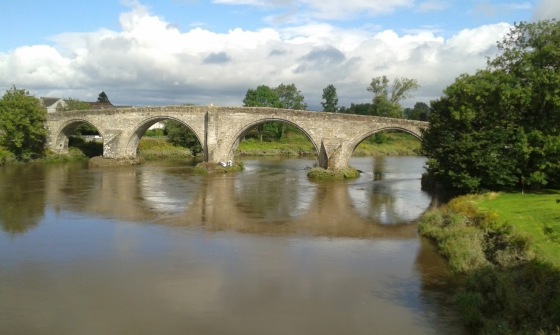
“They may take away our lives, but they’ll never take our freedom!” roared Scottish rebel William Wallace until he was blue in the face.
Mel Gibson’s portrayal of the rebel – and revered symbol of Scottish resistance – in the film Braveheart was a tad on the inaccurate side to say the least. For starters, Wallace wasn’t even “Braveheart” – that was Robert the Bruce!
In a film famously shot-through with historical inaccuracies, even the scene featuring the famous Battle of Stirling Bridge was missing a somewhat significant prop: the bridge.
The Battle of Stirling Bridge took place in 1215, when the Scots routed the English troops, and a view of the battleground with a loop of the river can be seen from the top of the National Wallace Monument.

The famous loop
In a nutshell, possible something resembling a pistachio, the huge English force of cavalry and infantry were caught on the confined narrow loop of the River Forth having crossed a wooden bridge, and were soon driven into ignominy, then into the ground, and finally into oblivion.
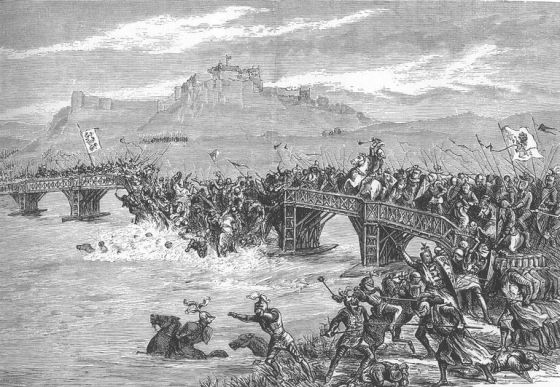
The actual bridge
Niggly little side note: William’s mother was Margaret Crawford – a daughter of Hugh Crawford, head of the House of Crawford.
The Scots were encamped at the time on the rocky Abbey Craig where the National Wallace Monument stands today. It is only a short haggis throw away from the University of Stirling where I was encamped myself.
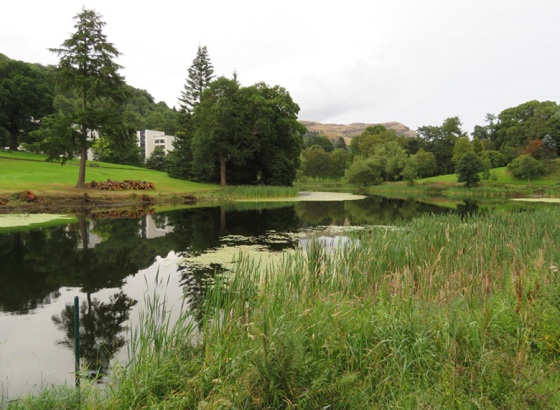
Not a bad campus
Nestled snugly in the foothills of the Scottish Highlands, the university campus is often cited as one of the most beautiful campuses (or is that campi?) in the UK with its own loch amidst acres of trees and greenery.
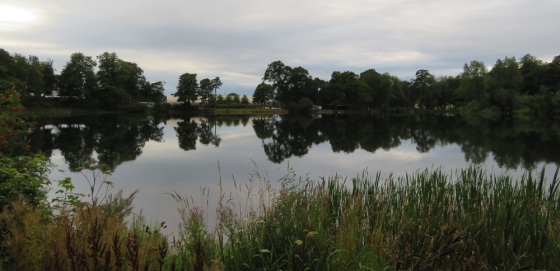
Not bad at all…
Known as the Gateway to the Highlands, Stirling tumbles down from the castle – grey, blocky and brooding. Mary, Queen of Scots, lived here, and her son, King James VI, was crowned King of Scots at the nearby Church of the Holy Rude; arch Scottish reformer John Knox was on hand to rattle off the sermon.
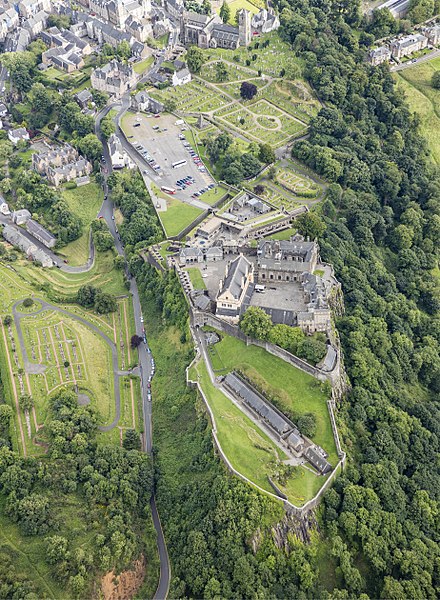
Aerial view of Stirling Castle by Godot13
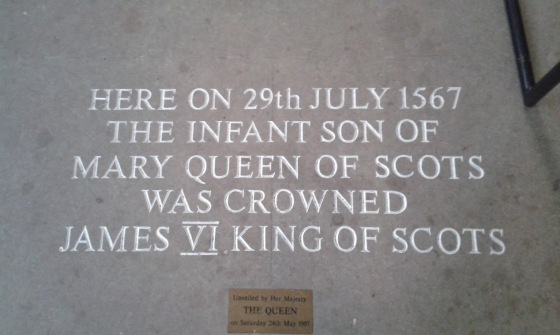
The Old Town Jail was built when the former Tolbooth Jail (now Stirling’s venue for music, performance and classes) was rated as the worst prison in Britain. It was still no picnic though – a strict regime of solitude, ghastly food, hard work, and aching discomfort saw to that. They were probably made to watch Eastenders too.
The tour of the jail was an enjoyable actor-led romp with one actor playing all the characters from prisoner to warden to executioner.
The roof top observation area gives excellent 360-degree views over Stirling where the Wallace Tower can be easily seen poking out of the forested crags.

Old Stirling Bridge and the Abbey Craig with the Wallace Monument by Kim Traynor
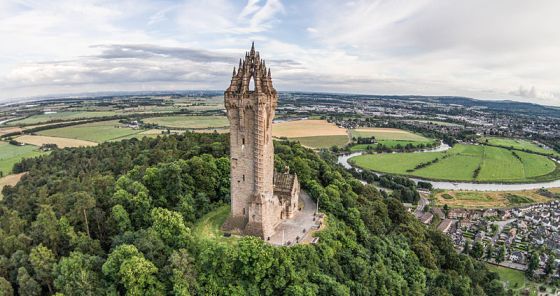
Wallace Monument by BusterBrownBB
The site of that other famous Scottish battle – the one of Bannockburn in 1314 – can also be pointed out from the observation deck.
The Battle of Bannockburn has an immersive 3D battle experience on site at the visitor centre. The 3D technology puts you in the thick of medieval combat on the momentous day when Robert the Bruce changed the course of Scottish history. But without being splattered with blood and guts or having a horse fall on you.
Unlike Braveheart, this was a more accurate telling of Scottish history.
Robert the Bruce faced King Edward II at Bannockburn in the decisive battle of the Wars of Scottish Independence.
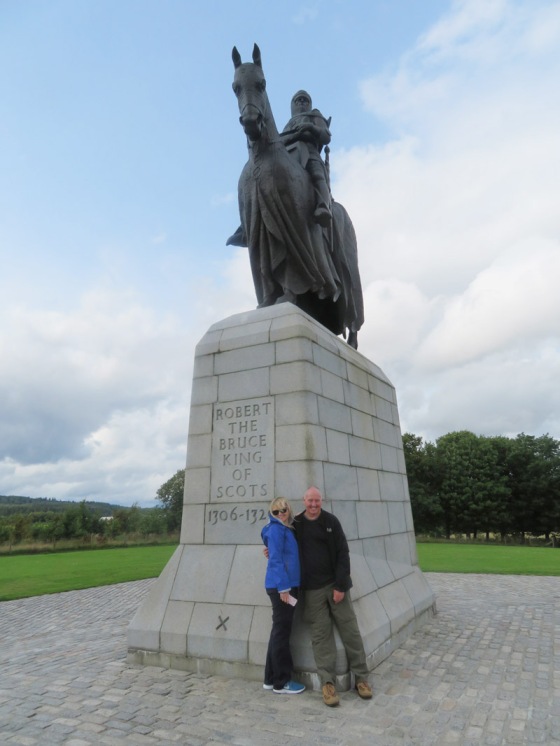
Located between Stirling and Perth is the small town of Auchterarder, a mere putt away from the famous Gleneagles Golf Course. The steeply sided Ochil Hills range back from Auchterader towards the Wallace Monument.
The long high street of Auchterarder gave the town its popular name of The Lang Toun. In the Middle Ages, Auchterarder was also known as the ‘town of 100 drawbridges’ – a natty description of the narrow bridges that once led from the road across wide gutters to the doorsteps of houses.
Auchterarder was also home to several generations of the Crawford family – going all the way back to at least 1630 (that we know of!)
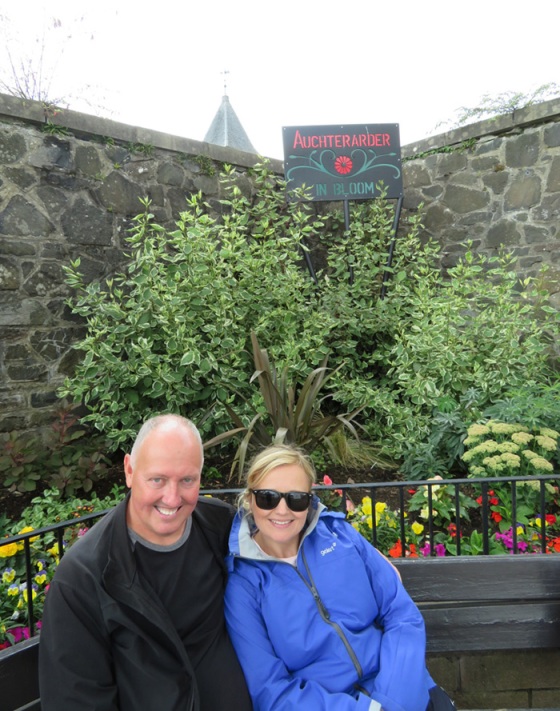
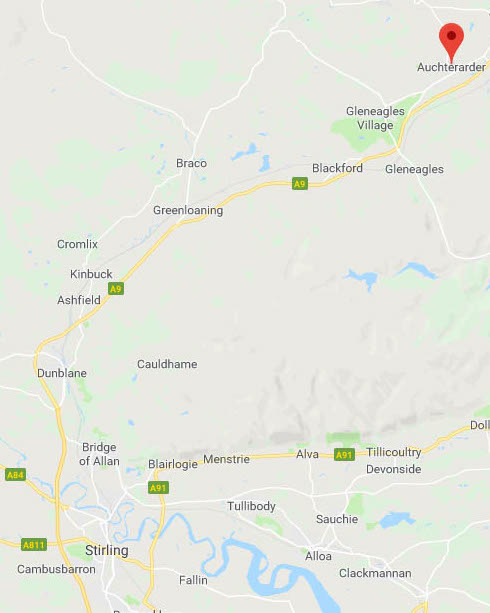
Close to the University of Stirling is the town of Dunblane. A tributary of the River Forth, the Allan Water runs through the town; there is a post box painted gold to commemorate local hero Andy Murray’s Olympic achievements, and a smallish cathedral, in the nave of which is a cenotaph in commemoration of the Dunblane Massacre of 1996.

Across the way is the 17th century Leighton Library – the oldest purpose-built private library in Scotland – with a collection of 4,500 books including a first edition of Walter Scott’s The Lady of the Lake. Best of all is Buffon’s artistic drawings of animals in his seventeen volumes of Histoire Naturelle written between 1749 – 1804.
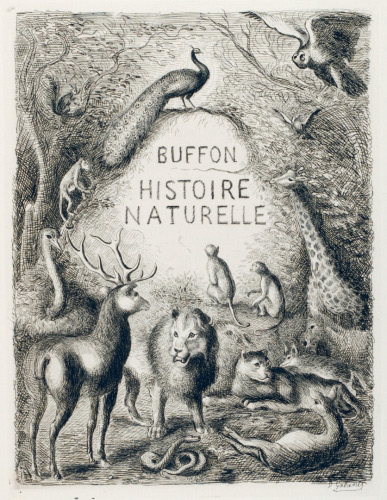
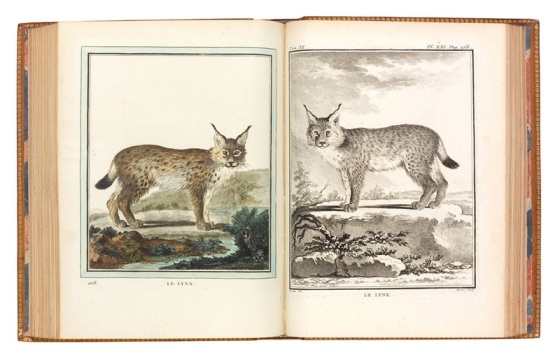
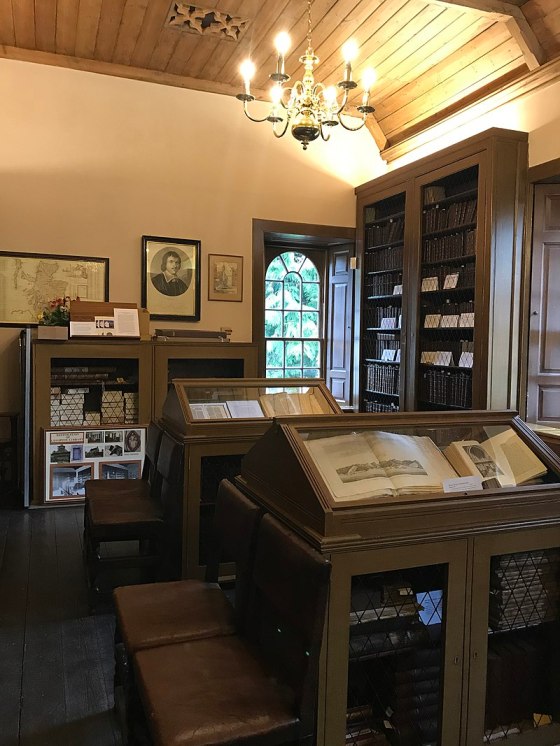
Leighton Library by LM Rodger
Time for a ‘toon…
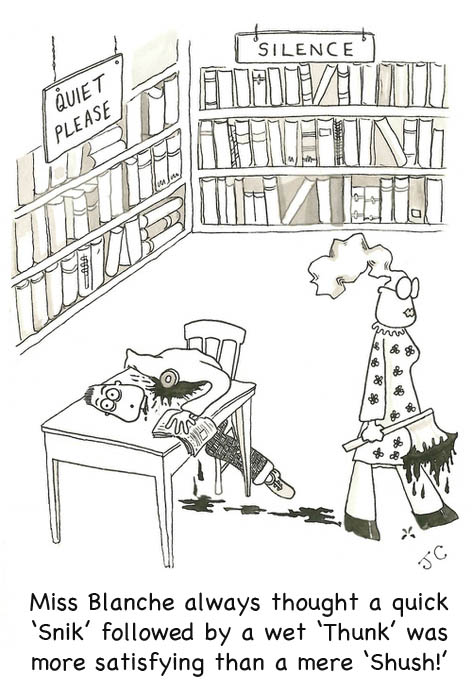
Glasgow – what can you say about it?
Historically always vying for top Scottish billing with Edinburgh, there’s enough meat on this city’s bones to satisfy the greediest of travellers.
It is difficult to describe a three-floored, vast-spaced towering edifice as a hidden treasure but the Kelvingrove Art Gallery and Museum is tucked away on the edge of the rather splendid Kelvingrove Park in the west end of Glasgow.
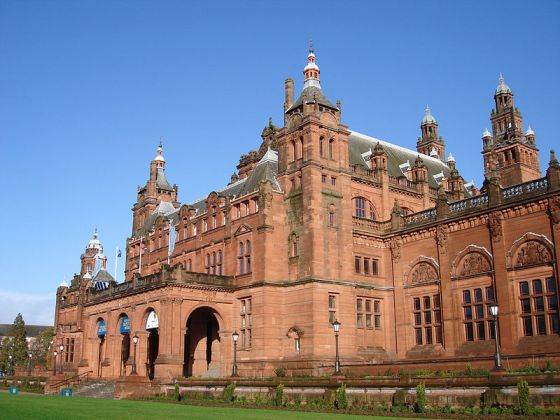
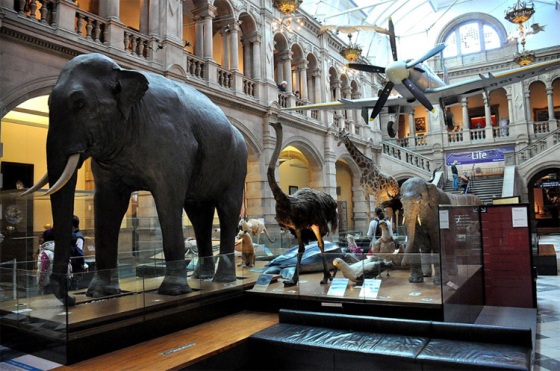
However, it is still one of the most visited attractions in the city, not least because it houses many outstanding artworks including daubs by Rembrandt, Monet, Renoir, Vincent van Gogh as well as one of Salvador Dali’s most famous pieces – Christ of St John of the Cross. You would almost certainly recognize it if you saw it:
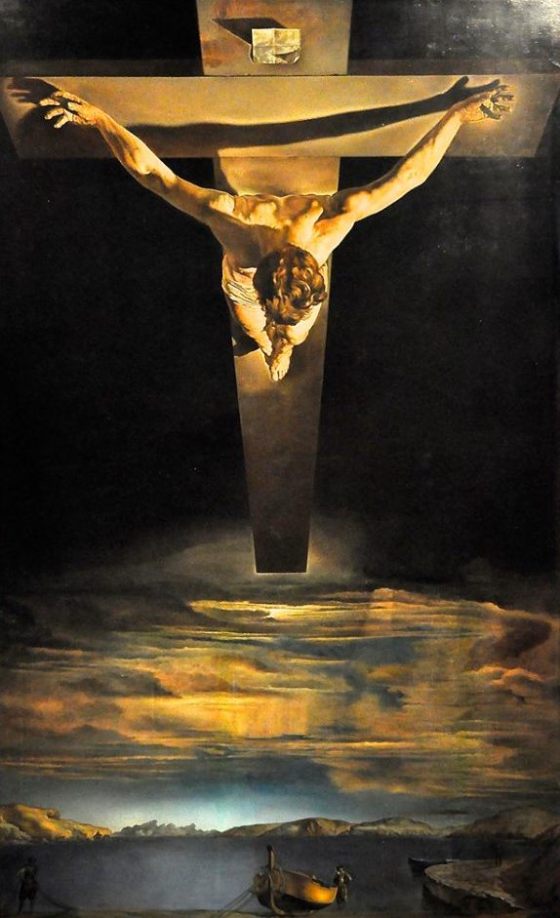
Kelvington Art Gallery is probably as equally famous for its big organ:
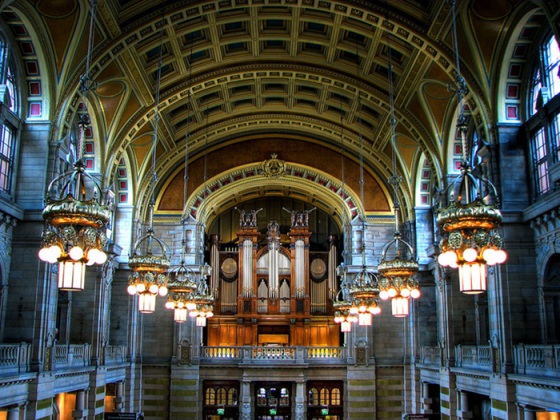
by innoxiuss
Before Birmingham reared its industrial head, Glasgow was the country’s second city, and its wealthy past has left a legacy of Victorian architecture including the City Chambers which preside over George Square.
Local artist and architect Charles Rennie Mackintosh added his own Nouveau and Deco tastes to the cityscape. Mackintosh seems to have carved out quite a bit of the city with buildings such as The Lighthouse, his first major architectural project. It was originally completed for the Glasgow Herald Newspaper, and claimed its name from the tower which reaches high above the city. It now houses the Scottish Centre for Architecture and Design. The iconic Glasgow School of Art is one of his most famous projects, at the moment undergoing extensive repairs and renovation after suffering yet another crippling fire.
Glasgow Cathedral pursues a medieval theme with its imposing presence and glittering stained glass panels. It is dedicated to St Mungo, the founder and patron saint of Glasgow, and was built on the spot where he was buried.
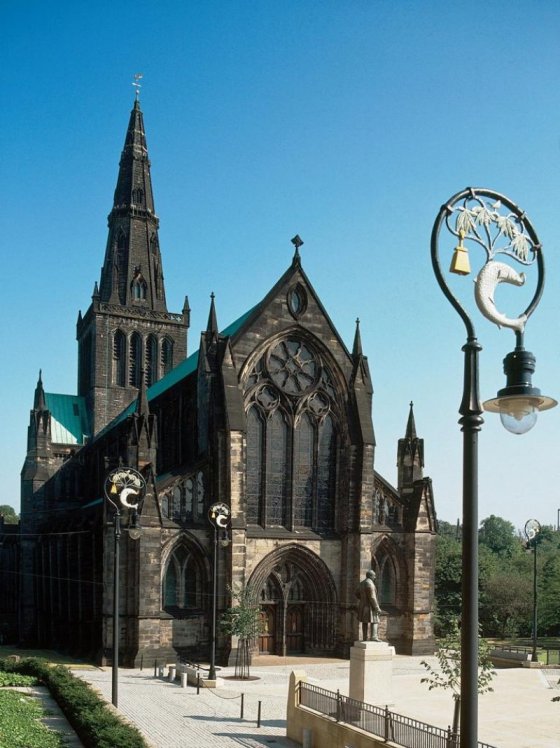
On Glasgow’s coat or arms there is a bell, bird, fish and tree, which all relate to legendary episodes in Mungo’s life (check out the lamp-posts by the cathedral).
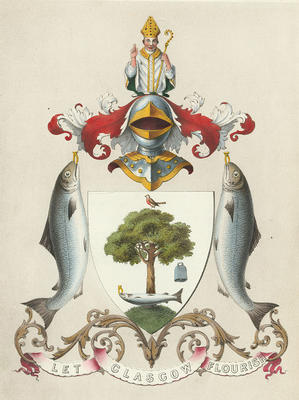
Great views can be had of the cathedral and the city from the mesmeric Necropolis – the twisting cemetery that overlooks Glasgow, and is awash with statues, sculptures and headstones. Oddly enough, the first person to have a memorial isn’t buried here. A statue of John Knox became the foundation stone of the Necropolis, and was also the first statue built for the great protestant reformer throughout Scotland. Mackintosh also has a memorial here but he was buried in London. They did manage to up the ante by tipping in William Miller, the man responsible for the nursery rhyme Wee Willie Winkie.
